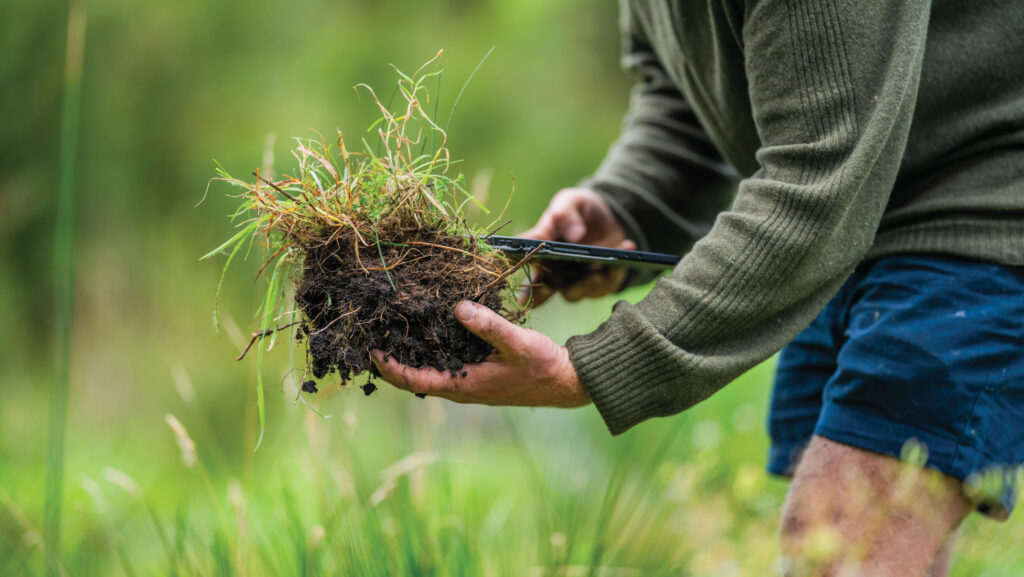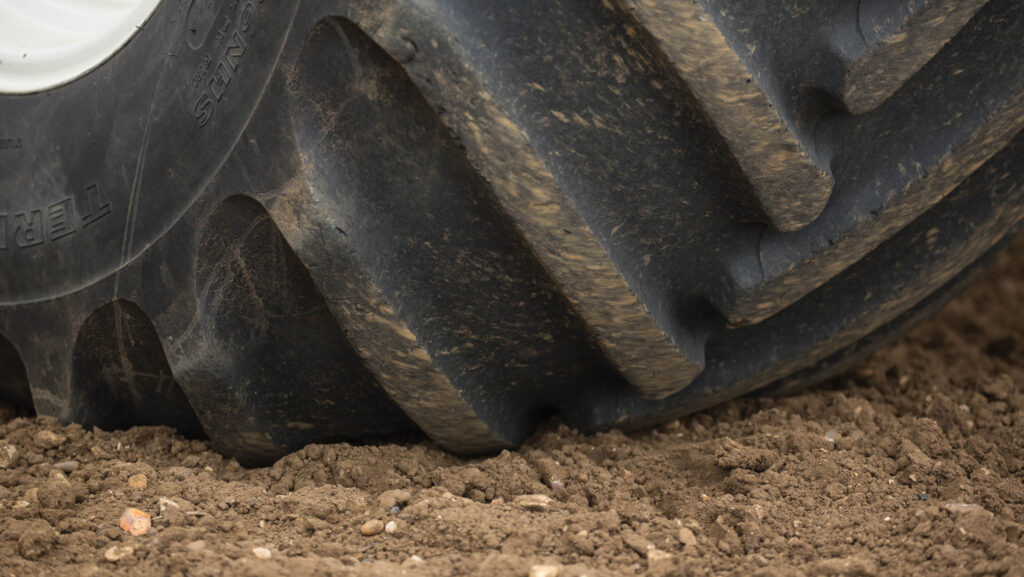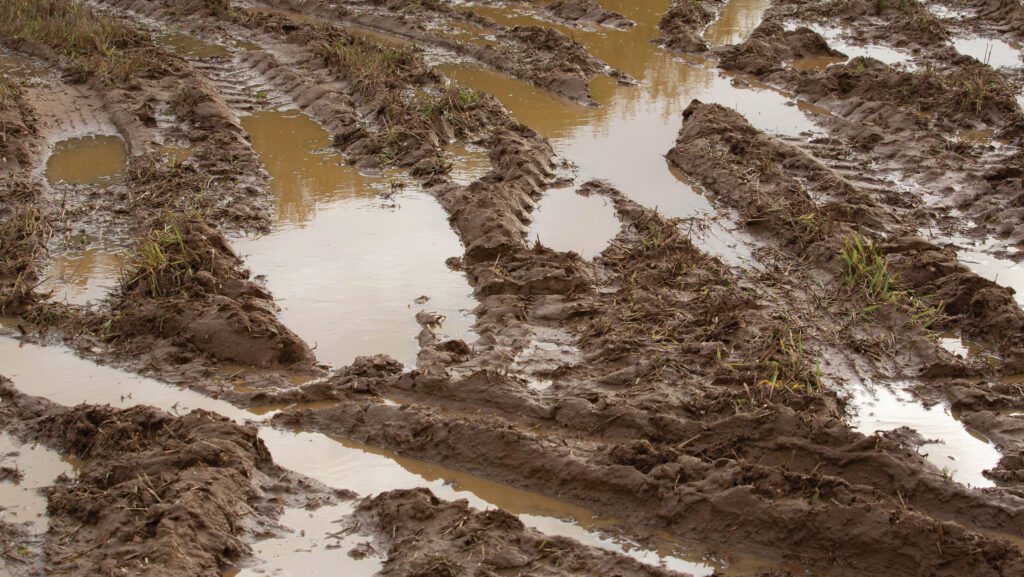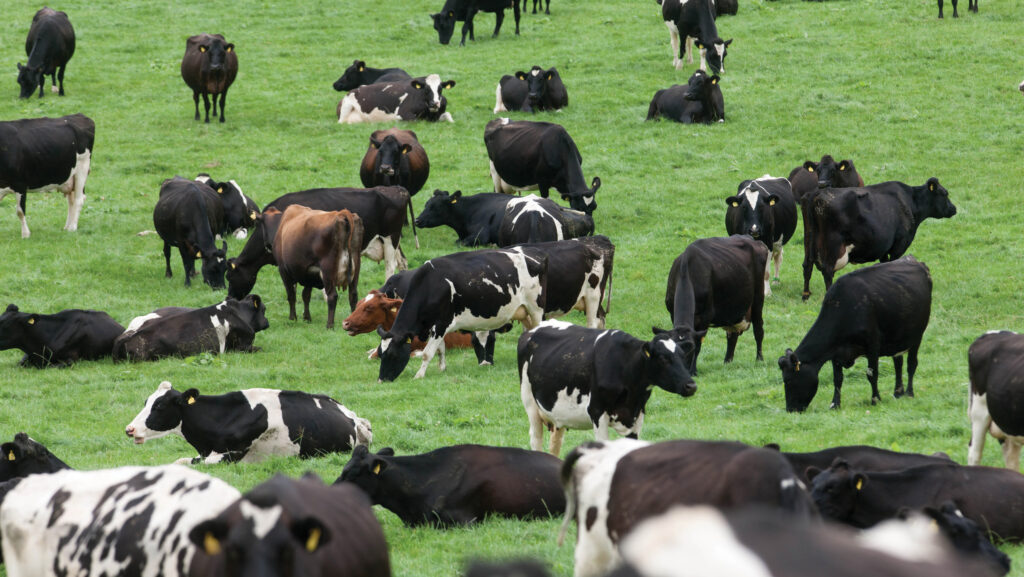How to minimise soil compaction without steel and diesel
 © Adobe Stock
© Adobe Stock Increased occurrence of extreme rainfall events should prompt farmers to remind themselves of the dangers of compacted soils.
However, plenty can be done to reduce the risk of declining productivity caused by compaction before reaching for the subsoiler.
According to independent soil researcher and educator Joel Williams of Integrated Soils, the UK’s recent prolonged spells of wet weather could lead to compaction and an increase in loss of soil and nutrients through surface run-off.
See also: How to improve livestock soils with biological approach
“British farmers typically experience a lot of rainfall, and the past 12 months have been exceptionally wet,” he said at a recent farmer meeting in Heligan, Cornwall.
“This rain brings advantages, but can put farms under greater risk of compaction.”
Roots are fundamental
His message focuses on maintaining a living root in the soil wherever possible and growing and diversifying roots.
Roots are the pathway for energy into the soil via root exudates – photosynthetic sugars created by the plant, he explained.
These sugars, and other compounds, are fed to soil microbes through the roots in exchange for essential nutrients needed for optimum plant growth.
Managing compaction risk
Pan busting, drainage and subsoiling have a place, said Joel. But system tweaks can prevent and alleviate compaction without using steel and diesel. He explained some practical methods:
1. Aim for dense root systems
- What More roots mean more root exudates and more potential for soil aggregation.
- How Undersowing, companion cropping, and diverse herbal leys all help increase plant and root variety. Roots can be given more time to recover between grazings, and optimising phosphate and other key nutrients in soils will help root development. Perennials will prioritise root development more than annual crops such as cereals, creating denser roots.
- Why Roots provide structure to help prevent soil being washed away, while they also produce sugary exudates that stick soils into aggregates. Air pockets open between these aggregates, creating room for water to infiltrate.
2. Adopt minimum tillage methods
- What Establish new crops without inversion ploughing and harrowing.
- How Use soil looseners, strip tillage or direct-drilling equipment to minimise soil movement.
- Why This minimises soil disturbance, so soil aggregates and air pockets remain in place.
3. Protect the soil surface
- What Crop and leaf litter, straw, dung and trampled grass act like a protective shield over the top of the soil.
- How Incorporate grassland, winter cover crops and arable ground undersown with grasses and clovers into the farm system.
- Why This soil armour minimises the compaction pressure of rain, hooves and wheels. It can also be a food source for soil biology and help build soil organic matter.

Avoid wheel damage © Tim Scrivener
4. Build soil organic matter
- What Soil organic matter consists of living and dead organisms from plants, animal tissues and excreta, and organic soil amendments and fertilisers.
- How By keeping living roots in the soil as far as possible and applying compost or mulching straw in arable situations. Soil organic matter is built two ways: through plant metabolic products, such as root exudates and amino acids, which feed soil biology; and the decomposition of structural plant material such as lignin and cellulose.
- Why It helps reduce soil compaction by acting like a sponge, absorbing weight and water, making soil less likely to compact. It also helps drive soil biology and is a source of carbon in the soil.
5. Keep off wet soils
- What Compaction can be avoided by not driving heavy machinery across land in wet weather.
- How Solutions are context-specific, but picking elevated, free-draining land for outwintering, and adopting flexible planting dates in autumn and spring with vigorous cover crops, can help.
- Why Wet soils, especially topsoils, are more likely to compact when soil moisture is at or above capacity. Heavy machinery or livestock can reduce pore space, further reducing infiltration rates.

Soil compaction leads to waterlogging during extreme wet weather © Tim Scrivener
6. Check calcium
- What A detailed soil analysis will determine the cation exchange capacity (the ability to hold positively charged cations, including important nutrients) of the soil.
- How Calcium lime is one of the most widely used amendments when calcium is a limiting factor. Gypsum, bone meal and other products can be spread, depending on geographical location.
- Why Soil particles (sand, silt and clay) have a negative charge. Calcium is positively charged, meaning it can open up soil particles by binding to them, creating pore space for water.
7. Reduce grazing frequency
- What Allow more time between grazing episodes, so plants can replenish their root reserves before being regrazed.
- How Increasing mob size or reducing paddock size by investing in fencing and water troughs enables increased rest periods. Rotation length and entry covers will depend on stock class.
- Why This allows roots more time to grow deeper and thicker in the soil.

© Tim Scrivener
8. Wider and more varied rotations
- What Increase the range of crop and livestock types on farm.
- How By introducing more varied livestock and different crops such as herbal leys and deep rooting forage brassicas into livestock systems, and by introducing livestock into arable systems.
- Why Increasing variety can enhance biodiversity and move closer to mimicking nature. Crop rotation can break crop/pest life cycles, reducing the chemical inputs that kill the very soil biology that helps soil aggregation.
9. Controlled traffic farming
- What In this system, wheels or tracks are confined to permanent traffic lanes covering the smallest possible area. Satellite guidance systems can help.
- How Use wider tyres to spread machinery weight and cultivate, spread slurry or drill with fewer passes.
- Why Infiltration can increase by 10% and topsoil porosity by 34%, according to the National Institute of Agricultural Botany when using this method. This produces better drainage, with an added benefit of less overlap.
